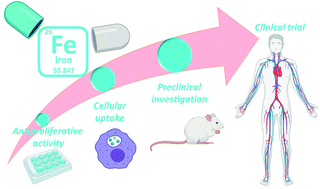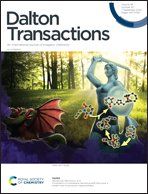Recent advances in iron-complexes as drug candidates for cancer therapy: reactivity, mechanism of action and metabolites
Abstract
In this perspective, we discuss iron-complexes as drug candidates that are promising alternatives to conventional platinum-based chemotherapies owing to their broad range of reactivities and to the targeting of different biological systems. Breakthroughs in the comprehension of iron complexes’ structure–activity relationship contributed to the clarification of their metabolization pathways, sub-cellular localization and influence on iron homeostasis, while enlightening the primary molecular targets of theses likely multi-target metallodrugs. Both the antiproliferative activity and elevated safety index observed among the family of iron complexes showed encouraging results as per their therapeutic potential and selectivity also with the aim of reducing chemotherapy side-effects, and facilitated more pre-clinical investigations. The purpose of this perspective is to summarize the recent advances that contributed in unveiling the intricate relationships between the structural modifications on iron-complexes and their reactivity, cellular trafficking and global mechanisms of action to broaden their use as anticancer drugs and advance to clinical evaluation.

- This article is part of the themed collection: 2020 Frontier and Perspective articles


 Please wait while we load your content...
Please wait while we load your content...